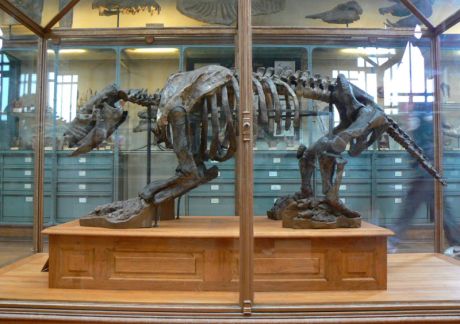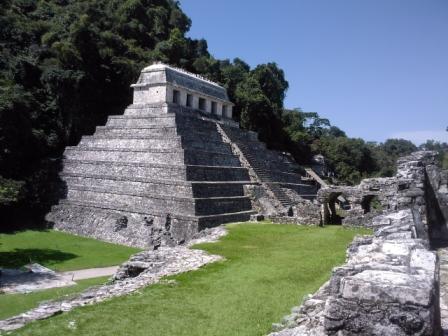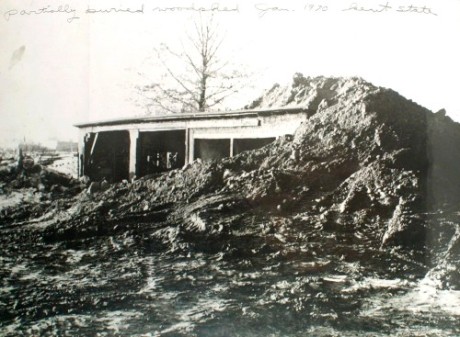Hi. How Can You Help Me?
September 3, 2013
Schizophrenics are useless to Western Civilization. I don’t write that in haste either. I can’t hold a job. I sit around by myself all day, play piano, make art, play video games, cook, read, eat, sleep, cry. The Capitalistic thrust of the human human spirit is born from our epistemological tools to manufacture technology (that which makes something more efficient). Whether it be as profound as the development of language, or as complex as the UPS’s implementation of GPS within a logic pipeline to push a piece of merchandise into someone’s home quicker, people seem to have an obsession with utility. This obsession is crafting a lens for humanity that refracts only the social / cultural / economic utility of what’s ‘out there’ into the mind (If you disagree with me on this, try to find something meaningful that does not serve some socially relevant function). With the small percentage of wealth (both financially and socially) that is ‘up for grabs’ in today’s global ecosystem, people seem to look more into the utility of each individual. In the case of the Schizophrenic, there is no utility there, hence no respect. People will look right through you, ignore you and neglect you until you feel like you can walk through walls like a ghost.
Some new music
June 27, 2011
These tunes were professionally recorded by a good friend of mine…
Enjoy!
My music
June 20, 2011
Here’s a link to some music I make with a trio in my apartment. I’m on piano.
Sense, Nonsense and Mysticism
December 5, 2009
“The limits of my language are the limits of my world.” – Wittgenstein
Actuality has little to do with making sense and more to do with accepting nonsense. Making sense is an activity that operates with 4-dimensional syntax and grammar (usage). Logic (syntax and grammar) is a sequential (time) contextual (space) analysis – it is the rules “behind” making sense. The limits of these rules – their boundaries – confine a sign and separate it from its context of signs, charging the symbol with meaning through its usage. Logic gives form in an otherwise “undifferentiated mass of organic sensation”. Without the form of a sign, it would have no meaningful content, but would rather be a powerless shape in a context of sameness. There is a logical limit on the expressive power of languages. What is beyond these limits is nonsense. That is not to say that it is insignificant, but rather inexpressible. The nonsense is something logic cannot limit. It is either an infinity or a paradox that dissolves logic and all hopes of making sense. The causal (sequential) way of interpreting the world is an active way of interpreting the world. The passage of time is continuous, flowing and progressive. Growth and decay are continuous, fluid movements. This way of thinking of time, as Smithson pointed out, is a practical, active way of thinking about time, but has little to do with the impractical actuality of time – the present. The present is unobtainable by any logical means. This does not necessarily entail that it is unlimited, infinite and void. (which Smithson might ascribe to the present) But if time were a place where events happened, the active (logical) event would cease to happen as soon as it happened. The present – the actual – is a space without limits… it is a space apart from logical (limited) expressive meaningful space. It is an incomprehensible infinity of possibilities where there is no correct or incorrect. It is a meaningless context of sameness… unobtainable. The present is inactive. There is no movement in an instant of time. It is a pause between the future and the past.
“The future criss-crosses the past in an unobtainable present.” – Smithson “Quasi-infinities of a Waning Space” Logic cannot obtain the present. Feeling cannot seize the present.
The inactive present avoids logic and experience because it has no limits. What we experience is the future criss-crossing the past. This is an active, expressive time with limits that change. It can be mapped. Progression and evolutionary notions of time turn into logical (epistemic) tools to map action. This time makes sense. Using this time, the world makes sense. Without this active time, there is no sense to be made. It is, as Smithson suggested, an infinite void of sameness – no limits – no form – nothing to make sense out of. Logic requires active, continuous time. It is fundamental to thinking. This is not to say that all of our provisional theories are wrong. They are correct. But they are only correct because they are within the limits of logic. There is no correct or incorrect outside the limits of language and logic.
The interpretations of actuality have infinite possibilities, none of which are correct or incorrect. There are historically contingent provisional theories built on logical, fallible foundations that cannot be proven correct or incorrect because the foundation (axiom) floats without context. There is no map of the map. The world described is limited by the epistemic tools at hand. The world felt is limited by the glass (sensing) body. The nonsites eliminate the body from setting up limits, to let the world set the limits.
Painting
December 2, 2009
“Proof”, Skepticism, Belief and Satire
February 6, 2009
I Heart Huckabees “head banging scene”
By using a jejune experiment, I think Smithson is pointing out the obvious in relation to the absurd, as usual through his subtle satire. By saying “prove” in the use of a jejune experiment, he is commenting on the fetishes of culture (of his time), by saying, in essence, a child playing in a sandbox does not need a probability equation to make him/her believe that he cannot make the sand reverse back into pure black and white. I think you need to read Smithson with a bit of a sense of humour, sometimes. It’s pretty funny, considering that an unenculturated, unknowledgeable child might believe in the irreversability of entropy (via a sandbox) moreso than some adults may believe so because of the probabilistic “conclusions” and methods of the sciences. In doing this, he is most certainly not berating the Sciences at all, but most likely pointing out the absurdity of believing otherwise.
It’s a mockery. This is what happens when people believe in certain highly probable things, like entropy or an external world.
Smithson might attribute the fetishes for “proof” and lack of belief to a very fundemental misunderstanding of language due to “the mania for literacy”. He continues in the essay to write, “References are often reversed so that the “object” takes the place of the “word”. A is A is never A is A, but rather X is A. The misunderstood notion of a metaphor has it that A is X – that is wrong.” The word is not the object, yet this might be the fundamental misconception of language that extends outward into our cultural biases about “art movements”, rather than our more acute cultural biases about art and the artist, or an idea and its creator. The fetish for literacy, to paraphrase Smithson, is due to language fears. These language fears are a cultural phenomenon, where the size of your vocabulary might be an expression of your language fear. The labels of “art movements” are curiously long-winded and innacurate, which is why some artists, and historians put quotes around them. They have become a convention where categorical limits are necessary, but the meaning of the term brings to mind something completely different than what it’s referring to. It might be more appropriate, for convention’s sake, to name periods in art history from one artists name to the next, or one artpiece to the last. So, “conceptual art” might better be called “Duchamp onward”, or “Fountain onward”.
But, why the misleading terms? I think we can look to the fetishes of capitalism for this answer. The illusory hierarchies that are a development of the “territory struggle”, where the illusion becomes a “concrete” cell, and the dreamy “power-structures” that are upheld by the powerful, are considered real. The powerful could be considered wardons of the powerless. The nightmare of a “prison” becomes all too real. The physical language involved in political, and social discourse is misleading in some cases, I think. They’re not “territories” or “structures” but mirages, fantasies, and illusions. They don’t take up space the way a building does, but destroy actual space through the power of abusing metaphor. Their abuse of metaphors creates hallucinatory delusions of “territory” and “structures.” These delusions, I think, create a reversed belief in metaphor that extends into the misconceptions, and thus mislabels that are prevelaent in movements throughout history.
If you don’t believe in entropy, Smithson might say, “find a child and ask them.” Or, if you don’t believe in existence, the writers of I Heart Huckabees might say, “bash your head against something.”
Dialectics-As-Process
February 3, 2009

The context that postmodern aesthetics takes into account, traced back to Frederick Law Olmsted’s creation of parks in New York City in the 19’th Century, developed into a massive dialectical relationship of the landscape to human activities, be it social, political, and natural. The vastness of the context, for some post modernists, spans all the way back to the paleolithic era encased in permeable glass in museums – the bones of a triceratops still undergoing the culturally emergent notion of entropy – to the extrapolated second law of thermodynamics, that says, in the future, the universe will become an all-encompassing sameness, all the way to the irreversability of eternity. The context encompasses our (biased) epistemic evolution along with the actual landscape in a dialectic-as-process that is never finished.

I think dialectical relationships need to be specific. For instace, a dialectic between a landscape and a map must consider a broad contextual range, meaning that the physical sciences must be employed to establish the “side” of the landscape in the dialectic and its relation to the “side” of the map. Physical history, like geological time, of a particular landscape (site) is in a continual relationship with the human activities (social, political and natural). The primordial eras are entombed in permeable glass cases, where heat can escape the fossils of dinosaurs. We have a relationship with the primordial era through the archeological digs that brought up the fossils from rock layers in the earth. They are now entombed in museums. The entropic geological time, then, might be said to be in a relationship with the social, political and natural human (cultural) activites manifested in the “landscape” of the architecture, and design of a history museum. The preserved history is what some postmodern artists were interested in, as they could use a physical landscape of a museum to establish a dialectic with the maps. The social, political, and natural (i.e. biological evolution) histories are found in ruins like pompey, cathedrals in europe, Mayan Pyramids, and even the deteriorating archtecture of today. History proper, is a fiction to some. The people that hold this view become interested in the ruined landscapes of past civilizations, fossils found in the rocks, hieroglyphs, language entombed in books – all real stuff – even the buildings erected today that “rise into ruin, rather than erected for the future.” (paraphrasing Smithson) The future becomes forgotten in the past – meaning in the instant a brick is layed, it is already in ruin. The future is remembered through the past. The history museums are an actual landscape undergoing physical processes alongside cultural processes. This way, a map of the past can be developed from a transitory landscape evolving along with human cultural activities.
In simpler terms, All of the physical Sciences, aesthetics, semiology, architecture, and art are employed on actual landscapes to make maps of history. It is a deconstruction of Idealistic historical dialectics, through the belief in material reality. Alot of artists were reading Borges, Merleau Ponty, Levi-Strauss, Olmsted, physicists, biologists, chemists, geologists, etc., which reconstructed this deconstruction of history-as-an-idea.
All of these sciences are themselves an historically contingent cultural emergence that change alongside with the landscape. The landscape is no longer a “thing-in-itself” but a “thing-for-us”.




